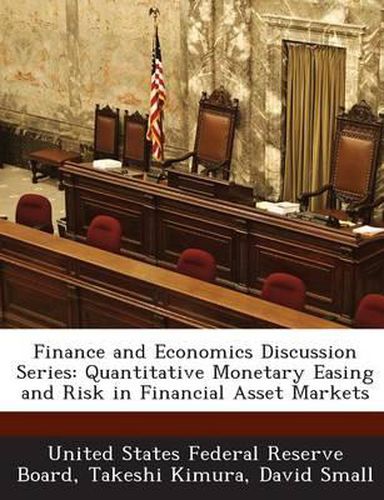Readings Newsletter
Become a Readings Member to make your shopping experience even easier.
Sign in or sign up for free!
You’re not far away from qualifying for FREE standard shipping within Australia
You’ve qualified for FREE standard shipping within Australia
The cart is loading…






In this paper, we empirically examine the portfolio-rebalancing effects stemming from the policy of quantitative monetary easing recently undertaken by the Bank of Japan when the nominal short-term interest rate was virtually at zero. Portfolio-rebalancing effects resulting from the open market purchase of long-term government bonds under this policy have been statistically significant. Our results also show that the portfolio-rebalancing effects were beneficial in that they reduced risk premiums on assets with counter-cyclical returns, such as government and high-grade corporate bonds. But, they may have generated the adverse effects of increasing risk premiums on assets with pro-cyclical returns, such as equities and low-grade corporate bonds. These results are consistent with a CAPM framework in which business-cycle risk importantly affects risk premiums. Our estimates capture only some of the effects of quantitative easing and thus do not imply that the complete set of effects were adverse on net for Japan’s economy. However, our analysis counsels caution in accepting the view that, ceteris paribus, a massive large-scale purchase of long-term government bonds by a central bank provides unambiguously positive net benefits to financial markets at zero short-term interest rates.
$9.00 standard shipping within Australia
FREE standard shipping within Australia for orders over $100.00
Express & International shipping calculated at checkout
In this paper, we empirically examine the portfolio-rebalancing effects stemming from the policy of quantitative monetary easing recently undertaken by the Bank of Japan when the nominal short-term interest rate was virtually at zero. Portfolio-rebalancing effects resulting from the open market purchase of long-term government bonds under this policy have been statistically significant. Our results also show that the portfolio-rebalancing effects were beneficial in that they reduced risk premiums on assets with counter-cyclical returns, such as government and high-grade corporate bonds. But, they may have generated the adverse effects of increasing risk premiums on assets with pro-cyclical returns, such as equities and low-grade corporate bonds. These results are consistent with a CAPM framework in which business-cycle risk importantly affects risk premiums. Our estimates capture only some of the effects of quantitative easing and thus do not imply that the complete set of effects were adverse on net for Japan’s economy. However, our analysis counsels caution in accepting the view that, ceteris paribus, a massive large-scale purchase of long-term government bonds by a central bank provides unambiguously positive net benefits to financial markets at zero short-term interest rates.